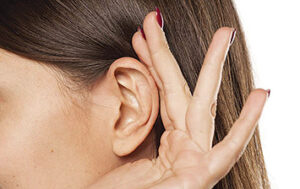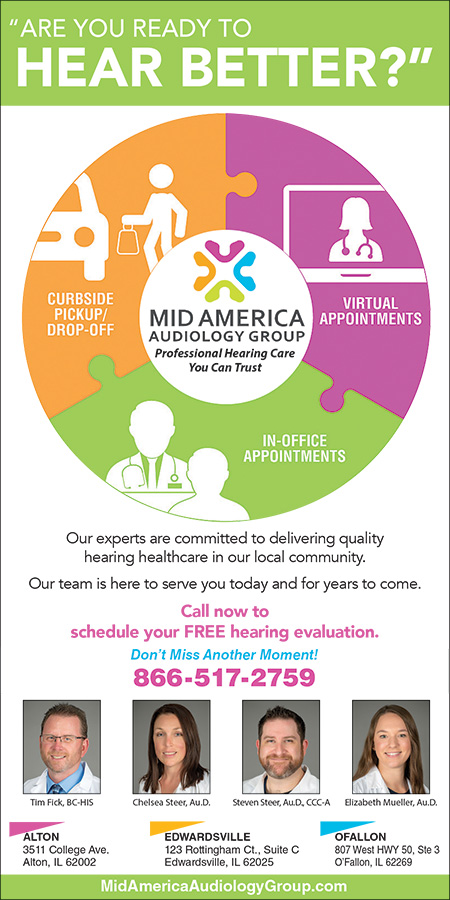 Your ears change with age, just like the rest of your body. And it’s not only your hearing that’s affected. Everything from the texture of earwax to your risk of having tinnitus changes in midlife and beyond. But experts say the following good habits can help keep your ears healthy for years to come.
Your ears change with age, just like the rest of your body. And it’s not only your hearing that’s affected. Everything from the texture of earwax to your risk of having tinnitus changes in midlife and beyond. But experts say the following good habits can help keep your ears healthy for years to come.
REGULAR SCREENINGS
Think of regular hearing screenings like routine dental or eye exams: Your medical provider will make sure everything is functioning as it should and look for any problems – like hearing loss – in a timely manner.
Screening does not necessarily mean a hearing test. It can be a two-stage process, the first stage being a questionnaire, or your medical doctor asking you three or four questions in conjunction with your physical.
According to guidelines from the World Health Organization, adults 50 and older without hearing loss should be screened every five years through age 64. Starting at 65, the guidelines recommend screening every one to three years (hearing loss and other conditions may call for more frequent monitoring).
TINNITUS, VERTIGO
Along with age-related hearing loss, which affects an estimated one in three adults 65 and older, other ear-related conditions also become more common with age. These include tinnitus, which peaks in prevalence among adults ages 60 to 69 and causes ringing (or sounds like hissing, whooshing or buzzing) in the ears.
According to the American Tinnitus Association, the “vast majority” of tinnitus cases are caused by sensorineural hearing loss – that’s the kind responsible for age-related hearing loss, or presbycusis. While no cure for tinnitus currently exists, treatment options can help lessen its severity.
Another risk for older adults: benign paroxysmal positional vertigo, or BPPV, which results in episodes of dizziness and is caused by the displacement of tiny calcium crystals found within the inner ear. Under the age of 50 the most common cause of displacement is head trauma. Over 50, the most common cause is age-related changes to the utricle, or the organ where those tiny crystals live.
Fortunately, the condition can typically be treated with a series of head movements that reposition the crystals. Your audiologist or medical provider can perform this maneuver as a simple in-office procedure. Don’t try it at home without first receiving a professional diagnosis and guidance.
MEDS CAN HARM EARS
Chronic conditions including sleep apnea, diabetes, high blood pressure, high cholesterol and cardiovascular disease up your risk of hearing loss. If you’re at increased risk, your provider may recommend more frequent screenings to monitor your hearing.
Some medications are ototoxic, meaning they can damage the ear and result in permanent or temporary hearing loss, tinnitus or balance disorders. These include certain cancer chemotherapy drugs, antibiotics and loop diuretics.
If you’re taking an ototoxic medication, discuss the potential for hearing damage with your doctor. A baseline hearing and balance test before you start treatment, as well as periodic hearing tests during treatment, are recommended by ASHA.
MIND YOUR EARWAX
If you’ve noticed changes to your earwax with age, you’re not imagining things. The waxy, protective substance that coats the ear canal actually gets drier and harder as we get older, which can lead to problems with excess buildup or blockages that result in symptoms like hearing loss, ringing in the ear or a sensation of fullness.
If you suspect you have excess or impacted earwax, your general practitioner (or, in more severe cases, an otolaryngologist) can use a few different methods to safely clear out your canals. Buildup or not, cotton swabs and other implements like bobby pins should never be inserted into the ear – doing so can cause damage and push wax farther into the canals.
EAR PROTECTION
Whether or not you have hearing loss, experts say that protecting your ears during noisy activities – think jobsite, concerts, sporting events or even mowing the lawn – is always a good idea. According to the Centers for Disease Control and Prevention, as many as 30 to 50 percent of hair cells in the inner ear responsible for hearing may be permanently damaged or destroyed before hearing loss becomes evident on a hearing test.
That means the best time to get in the habit of using ear protection is before you notice hearing loss in the first place.


